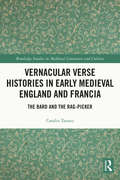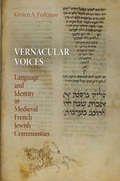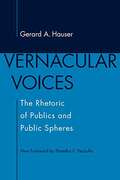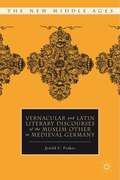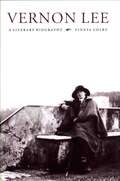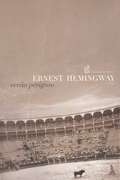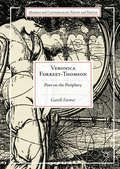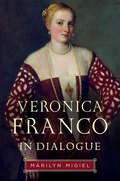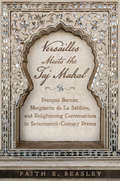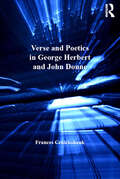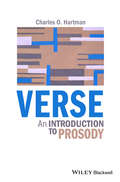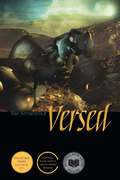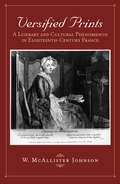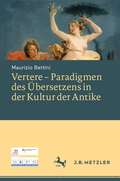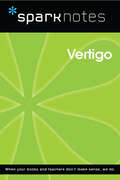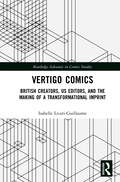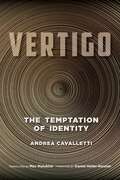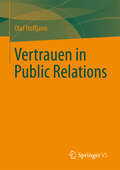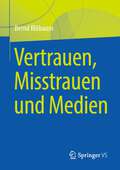- Table View
- List View
Vernacular Verse Histories in Early Medieval England and Francia: The Bard and the Rag-picker
by Catalin TaranuIn a provocative take on Germanic heroic poetry, Taranu reads texts like Beowulf, Maldon, and the Waltharius as participating in alternative modes of history-writing that functioned in a larger ecology of narrative forms, including Latinate Christian history and the biblical epic. These modes employed the conceit of their participating in a tradition of oral verse for a variety of purposes: from political propaganda to constructing origin myths for early medieval nationhood or heroic masculinity, and sometimes for challenging these paradigms. The more complex of these historical visions actively meditated on their own relationship to truthfulness and fictionality while also performing sophisticated (and often subversive) cultural and socio-emotional work for its audiences. By rethinking canonical categories of historiographical discourse from within medieval textual productions, Vernacular Verse Histories in Early Medieval England and Francia: The Bard and the Rag-Picker aims to recover a part of the wide array of narrative poetic forms through which medieval communities made sense of their past and structured their socio-emotional experience.
Vernacular Voices: Language and Identity in Medieval French Jewish Communities (Jewish Culture and Contexts)
by Kirsten A. FudemanA thirteenth-century text purporting to represent a debate between a Jew and a Christian begins with the latter's exposition of the virgin birth, something the Jew finds incomprehensible at the most basic level, for reasons other than theological: "Speak to me in French and explain your words!" he says. "Gloss for me in French what you are saying in Latin!" While the Christian and the Jew of the debate both inhabit the so-called Latin Middle Ages, the Jew is no more comfortable with Latin than the Christian would be with Hebrew. Communication between the two is possible only through the vernacular.In Vernacular Voices, Kirsten Fudeman looks at the roles played by language, and especially medieval French and Hebrew, in shaping identity and culture. How did language affect the way Jews thought, how they interacted with one another and with Christians, and who they perceived themselves to be? What circumstances and forces led to the rise of a medieval Jewish tradition in French? Who were the writers, and why did they sometimes choose to write in the vernacular rather than Hebrew? How and in what terms did Jews define their relationship to the larger French-speaking community?Drawing on a variety of texts written in medieval French and Hebrew, including biblical glosses, medical and culinary recipes, incantations, prayers for the dead, wedding songs, and letters, Fudeman challenges readers to open their ears to the everyday voices of medieval French-speaking Jews and to consider French elements in Hebrew manuscripts not as a marginal phenomenon but as reflections of a vibrant and full vernacular existence. Applying analytical strategies from linguistics, literature, and history, she demonstrates that language played a central role in the formation, expression, and maintenance of medieval Jewish identity and that it brought Christians and Jews together even as it set them apart.
Vernacular Voices: The Rhetoric of Publics and Public Spheres (Studies in Rhetoric & Communication)
by Gerard A. Hauser Phaedra C. PezzulloA foundational text of twenty-first-century rhetorical studies, Vernacular Voices addresses the role of citizen voices in steering a democracy through an examination of the rhetoric of publics. Gerard A. Hauser maintains that the interaction between everyday and official discourse discloses how active members of a complex society discover and clarify their shared interests and engage in exchanges that shape their opinions on issues of common interest. <p><p> In the two decades since Vernacular Voices was first published, much has changed: in the aftermath of the 9/11 terrorist attacks, US presidents have increasingly taken unilateral power to act; the internet and new media have blossomed; and globalization has raised challenges to the autonomy of nation states. In a new preface, Hauser shows how, in an era of shared, global crises, we understand publics, how public spheres form and function, and the possibilities for vernacular expressions of public opinion lie at the core of lived democracy. A foreword is provided by Phaedra C. Pezzullo, associate professor of communication at the University of Colorado Boulder.
Vernacular and Latin Literary Discourses of the Muslim Other in Medieval Germany
by Jerold C. FrakesLittle attention has been focused onthe representation of Muslimsin medieval Germany. Proceeding from a grounded use of contemporary cultural theory and close textual analysis, this study analyzes the role of Muslims in several core texts representing drama, epic, and lyric written by the most important writers of medieval Germany. Far from simply adding medieval Germany to the growing scholarly list of the 'pre-post-colonializing' European cultures, this study provides importantnew perspectives. "
Vernon Lee: A Literary Biography
by Vineta ColbyVernon Lee, born Violet Paget in 1856 to English parents who lived on the Continent, bridged two worlds and many cultures. She was a Victorian by birth but lived into the second quarter of the twentieth century. Her chosen home was Italy, but she spent part of every year in England, where she published over the years an impressive number of books: novels, short stories, travel essays, studies of Italian art and music, psychological aesthetics, polemics. She was widely recognized as a woman of letters and moved freely in major literary and social circles, meeting and at times having close friendships with a huge number of the major writers and intellectuals of her time, among them Robert Browning, Walter Pater, Henry James, H. G. Wells, Bertrand Russell, Bernard Berenson, and Mario Praz. Although she never committed herself to one program of political activism, she was an advocate for feminism and social reform and during World War I was an ardent pacifist. In her last years she watched with dismay the emergence of fascism.Vernon Lee: A Literary Biography recovers this crowded and intellectually eventful life from her previously unpublished letters and journals, as well as from her books themselves. Vineta Colby also explores Lee's troubled personal life, from her childhood in an eccentric expatriate family to her several unhappy love affairs with women to her frank recognition that her work, brilliant as some of it was, remained unappreciated. Through it all, Vernon Lee clung to her faith in the life of the mind, and through Colby's engaging biographical narrative, she emerges today as a writer worthy of renewed attention and admiration.Victorian Literature and Culture Series
Veronica Forrest-Thomson
by Gareth FarmerThis study offers a comprehensive examination of the work of the young poet and scholar, Veronica Forrest-Thomson (1947-1975) in the context of a literary-critical revolution of the late sixties and seventies and evaluates her work against contemporary debates in poetry and poetics. Gareth Farmer explores Forrest-Thomson's relationship to the conflicting models of literary criticism in the twentieth century such as the close-reading models of F. R Leavis and William Empson, postructuralist models, and the work of Ludwig Wittgenstein. Written by the leading scholar on Forrest-Thomson's work, this study explores Forrest-Thomson's published work as well as unpublished materials from the Veronica Forrest-Thomson Archive. Drawing on close readings of Forrest-Thomson's writings, this study argues that her work enables us reevaluate literary-critical history and suggests new paradigms for the literary aesthetics and poetics of the future.
Veronica Franco in Dialogue (Toronto Italian Studies)
by Marilyn MigielSince the late twentieth century, the Venetian courtesan Veronica Franco has been viewed as a triumphant proto-feminist icon: a woman who celebrated her sexuality, an outspoken champion of women and their worth, and an important intellectual and cultural presence in sixteenth-century Venice. In Veronica Franco in Dialogue, Marilyn Migiel provides a nuanced account of Franco’s rhetorical strategies through a close analysis of her literary work. Focusing on the first fourteen poems in the Terze rime, a collection of Franco’s poems published in 1575, Migiel looks specifically at back-and-forth exchanges between Franco and an unknown male author. Migiel argues that in order to better understand what Franco is doing in the poetic collection, it is essential to understand how she constructs her identity as author, lover, and sex worker in relation to this unknown male author. Veronica Franco in Dialogue accounts for the moments of ambivalence, uncertainty, and indirectness in Franco’s poetry, as well as the polemicism and assertions of triumph. In doing so, it asks readers to consider their ideological investments in the stories we tell about early modern female authors and their cultural production.
Versailles Meets the Taj Mahal: François Bernier, Marguerite de la Sablière and Enlightening Conversations in Seventeenth-Century France
by Faith E. BeasleyVersailles Meets the Taj Mahal identifies and explores the traces that exposure to India left on the cultural artifacts and mindset of France’s "Great Century" and the early Enlightenment. Focusing on the salon of Marguerite de La Sablière and its encounter with the traveler and philosopher François Bernier, this book resurrects the conversations about India inspired by Bernier’s travels and inscribed in his influential texts produced in collaboration with La Sablière’s salon. The literary works, correspondences, and philosophical texts produced by the members of this eclectic salon bear the traces of this engagement with India. Faith E. Beasley’s analysis of these conversations reveals France’s unique engagement with India during this period and challenges prevailing images derived from a nineteenth-century "orientalism" imbued with colonialism. The India encountered in La Sablière’s salon through Francois Bernier and others is not the colonized India that has come to dominate any image of the Orient. Versailles Meets the Taj Mahal adds a new chapter to literary and cultural history by adopting a new approach to the study of salon culture, exploring how texts, cultural artifacts, and patterns of thought were shaped by the collective reading and by the conversations emanating from these practices. Beasley’s analysis highlights the unique role of French salon culture in the evolution of western thought during the early modern period.
Verse and Poetics in George Herbert and John Donne
by Frances CruickshankInnovative and highly readable, this study traces George Herbert's and John Donne's development of a distinct poetics through close readings of their poems, references to their letters, sermons, and prose treatises, and to other contemporary poets and theorists. In demonstrating a relationship between poetics and religious consciousness in Donne's and Herbert's verse, Frances Cruickshank explores their attitudes to the cultural, theological, and aesthetic enterprise of writing and reading verse. Cruickshank shows that Donne and Herbert regarded poetry as a mode not determined by its social and political contexts, but as operating in and on them with its own distinct set of aesthetic and intellectual values, and that ultimately, verse mattered as a privileged mode of religious discourse. This book is an important contribution to the ongoing scholarly dialogue about the nature of literary and cultural study of early modern England, and about the relationship between the writer and the world. Cruickshank confirms Donne's reputation as a fascinating and brilliant poetic figure while simultaneously rousing interest in Herbert by noting his unique merging of rusticity and urbanity and tranquility and uncertainty, allowing the reader to enter into these poets' imaginative worlds and to understand the literary genre they embraced and then transformed.
Verse and Virtuosity
by Janie SteenWhile there is little evidence of formal rhetorical instruction in Anglo-Saxon England, traditional Old English poetry clearly shows the influence of Latin rhetoric. Verse and Virtuosity demonstrates how Old English poets imitated and adapted the methods of Latin literature, and, in particular, the works of the Christian Latin authors they had studied at school. It is the first full-length study to look specifically at what Old English poets working in a Latinate milieu attempted to do with the schemes and figures they found in their sources.Janie Steen argues that, far from sterile imitation, the inventiveness of Old English poets coupled with the constraints of vernacular verse produced a vital and markedly different kind of poetry. Highlighting a selection of Old English poetic translations of Latin texts, she considers how the translators responded to the challenge of adaptation, and shows how the most accomplished, such as Cynewulf, absorb Latin rhetoric into their own style and blend the two traditions into verse of great virtuosity. With its wide-ranging discussion of texts and rhetorical figures, this book can serve as an introduction to Old English poetic composition and style. Verse and Virtuosity, will be of considerable interest to Anglo-Saxonists, linguists, and those studying rhetorical traditions.
Verse: An Introduction to Prosody (Princeton Legacy Library #2809)
by Charles O. HartmanVerse is a seminal introduction to prosody for any student learning to read or write poetry, from secondary to graduate school. Discusses iambic pentameter and other kinds of metrical verse, scansion, rhythm and rhyme, free verse, song, and advanced topics such as poetic meter, linguistic approaches to verse, and the computer scansion of metrical poetry Written in a clear, engaging style by a poet and teacher with more than 30 years of experience teaching the subject Supplemented by a user-friendly website with student exercises and additional resources
Versed (Wesleyan Poetry Series)
by Rae ArmantroutWinner of the 2010 Pulitzer Prize for PoetryWinner of the Pulitzer Prize for Poetry (2010)Winner of the National Book Critics Circle Award (2009) Rae Armantrout has always organized her collections of poetry as though they were works in themselves. Versed brings two of these sequences together, offering readers an expanded view of the arc of her writing. The poems in the first section, Versed, play with vice and versa, the perversity of human consciousness. They flirt with error and delusion, skating on a thin ice that inevitably cracks: "Metaphor forms / a crust / beneath which / the crevasse of each experience." Dark Matter, the second section, alludes to more than the unseen substance thought to make up the majority of mass in the universe. The invisible and unknowable are confronted directly as Armantrout's experience with cancer marks these poems with a new austerity, shot through with her signature wit and stark unsentimental thinking. Together, the poems of Versed part us from our assumptions about reality, revealing the gaps and fissures in our emotional and linguistic constructs, showing us ourselves where we are most exposed. A reader's companion is available at http://versedreader.site.wesleyan.edu/
Versified Prints
by W. Mcallister JohnsonThe term 'versified prints' is used to describe images that are accompanied by poetic explanatory text. They were immensely popular and diffused throughout Europe in the eighteenth century, and many were shown at the Salon du Louvre. Although not all print verses are signed, their authors include occasional poets and members of the Académie Française. These prints remain among the most accessible documents for the study of art and society, but have never been examined before for their historical and cultural context.With 112 full-page reproductions, Versified Prints offers an engaging and informative introduction to these intriguing works. W. McAllister Johnson's guide discusses print production, the nature of sources, and the relationship and transformations in both text and images. Proposing a typology and methodology for this artistic phenomenon, Versified Prints enhances our knowledge of this fascinating new area of research and lays the groundwork for future studies. Disclaimer: Images removed at the request of the rights holder.
Versions of Antihumanism: Milton and Others
by Stanley FishStanley Fish, one of the foremost critics of literature working today, has spent much of his career writing and thinking about Milton. This book brings together his finest published work with brand new material on Milton and on other authors and topics in early modern literature. In his analyses of Renaissance texts, he meditates on the interpretive problems that confront readers and offers a sustained critique of historicist methods of interpretation. Intention, he argues, is key to understanding which pieces of historical data are relevant to literary criticism. Lucid, provocative, direct and inimitable, this new book from Stanley Fish is required reading for anyone teaching or studying Milton and early modern literary studies.
Verständliche Vermarktung von Strom aus erneuerbaren Energien
by Sascha Demarmels Dorothea Schaffner Sonja Kolberg Matthias Albisser Esther Federspiel Ursula Stalder Anja Janoschka Ursina KellerhalsDieses Buch untersucht, wie sich Stromprodukte aus erneuerbaren Energien verständlich vermarkten lassen, sodass die Konsumentinnen und Konsumenten den Mehrwert dieser Produkte verstehen und eine informierte Kaufentscheidung treffen. Eine Toolbox liefert Handlungsempfehlungen und erläutert Kommunikationsstrategien wie Gamification, Storytelling, Vereinfachung und Visualisierung. Basis der Handlungsempfehlungen sind Experteninterviews, in Experimenten getestete Pilotbeispiele sowie von Partnerunternehmen entwickelte Kommunikationsbeispiele, die in der Praxis umgesetzt und als Feldexperiment geprüft wurden.Der InhaltStrommarkt und -marketing in den DACH LändernForschungsstand "Angewandte Verständlichkeit"Kommunikationsstrategien zur Steigerung der Verarbeitungsmotivation und deren ValidierungBest-Practice-Beispiele aus verschiedenen Ländern Toolbox.
Vertere – Paradigmen des Übersetzens in der Kultur der Antike
by Maurizio BettiniMaurizio Bettinis Buch schildert die Praktiken und Paradigmen des Übersetzens in der griechischen und römischen Antike bis hin zu den Bibelübersetzungen des hellenistischen Judentums und der christlichen Spätantike. Es ist zugleich eine materialreiche historische Studie und ein kluger Essay über die Dimensionen des Übersetzens als Akt der kreativen Aneignung des Fremden. Im Kontrast zum modernen „postkolonialen“ Übersetzungsverständnis – das letztlich auf die monotheistische Schrift-Übersetzung zurückgeht – versteht Bettini die Übersetzungspraxis der Antike als Teil einer Kultur der sprachlich-literarischen Umwandlung, als Akt des (Nach-) Erzählens, zugleich auch als ein der Ökonomie des (sprach-)grenzüberschreitenden Austauschs verpflichtetes Handeln.
Vertigo (SparkNotes Film Guide)
by SparkNotesVertigo (SparkNotes Film Guide) Making the reading experience fun! SparkNotes Film Guides are one-stop guides to great works of film–masterpieces that are the foundations of filmmaking and film studies. Inside each guide you&’ll find thorough, insightful overviews of films from a variety of genres, styles, and time periods. Each film guide contains:Information about the director and the context in which the film was made Thoughtful analysis of major characters Details about themes, motifs, and symbols Explanations of the most important lines of dialogue In-depth discussions about what makes a film so remarkable SparkNotes Film Guides are an invaluable resource for students or anyone who wants to gain a deeper understanding of the great films they know and love.
Vertigo Comics: British Creators, US Editors, and the Making of a Transformational Imprint (Routledge Advances in Comics Studies)
by Isabelle Licari-GuillaumeThis book explores the so-called "British Invasion" of DC Comics’ Vertigo imprint, which played an important role in redefining the mainstream comics industry in the US during the early 1990s. Focusing on British creators within Vertigo, this study traces the evolution of the line from its creation in 1993 to its demise in 2019. Through an approach grounded in cultural history, the book disentangles the imprint’s complex roots, showing how editors channelled the potential of its British writers at a time of deep-seated economic and cultural change within the comics industry, and promoted a sense of cohesion across titles that defied categories. The author also delves into lesser-known aspects of the Invasion, exploring less-canonical periods and creators that are often eclipsed by Vertigo’s early star writers. An innovative contribution on a key element of comic book history, this volume will appeal both to researchers of Vertigo scholarship and to fans of the imprint. It will also be an essential read for those interested in transatlantic collaborations and exchanges in the entertainment industry, processes of cultural legitimation and cultural hierarchies, and to anyone working on the representation of national and social identities.
Vertigo: The Temptation of Identity
by Andrea CavallettiReading philosophy through the lens of Alfred Hitchcock’s Vertigo, Andrea Cavalletti shows why, for two centuries, major philosophers have come to think of vertigo as intrinsically part of philosophy itself.Fear of the void, terror of heights: everyone knows what acrophobia is, and many suffer from it. Before Freud, the so-called “sciences of the mind” reserved a place of honor for vertigo in the domain of mental pathologies. The fear of falling—which is also the fear of giving in to the temptation to let oneself fall—has long been understood as a destabilizing yet intoxicating element without which consciousness itself was inconceivable. Some went so far as to induce it in patients through frightening rotational therapies.In a less cruel but no less radical way, vertigo also staked its claim in philosophy. If Montaigne and Pascal could still consider it a perturbation of reason and a trick of the imagination which had to be subdued, subsequent thinkers stopped considering it an occasional imaginative instability to be overcome. It came, rather, to be seen as intrinsic to reason, such that identity manifests itself as tottering, kinetic, opaque and, indeed, vertiginous.Andrea Cavalletti’s stunning book sets this critique of stable consciousness beside one of Hitchcock’s most famous thrillers, a drama of identity and its abysses. Hitchcock’s brilliant combination of a dolly and a zoom to recreate the effect of falling describes that double movement of “pushing away and bringing closer” which is the habitual condition of the subject and of intersubjectivity. To reach myself, I must see myself from the bottom of the abyss, with the eyes of another. Only then does my “here” flee down there and, from there, attract me.From classical medicine and from the role of imagination in our biopolitical world to the very heart of philosophy, from Hollywood to Heidegger’s “being-toward-death,” Cavalletti brings out the vertiginous nature of identity.
Vertrauen in Public Relations
by Olaf HoffjannPR ist für viele längst zum Inbegriff der scheinheiligen Lüge geworden. Zu Recht - wie die Greenwashing-Strategien von Energiekonzernen eindrucksvoll zu belegen scheinen. Oder tut man ihr doch Unrecht? Denn wie soll PR in einer Kontingenzgesellschaft noch Wahrhaftigkeit und Redlichkeit beweisen können? Dieses Spannungsfeld steht im Mittelpunkt des Buches: Im ersten Teil werden Vertrauen bzw. Vertrauenswürdigkeit als zentrale Kategorien der PR herausgearbeitet. Worin besteht das Vertrauen in PR? Wie wird Vertrauen in PR begründet? Im zweiten Teil wird untersucht, wie PR das Problem der Vertrauenswürdigkeit zwischen Lüge und Wahrhaftigkeit sowie zwischen egoistischem und selbstlosem Verhalten zu lösen versucht. Auf einer systemtheoretischen und non-dualistischen Basis wird eine Gratwanderung unternommen: Es soll weder ein Whitewashing noch eine Verdammung der PR betrieben werden. Und doch wird am Ende des Buches immer deutlicher, wie schwierig es für den "Ehrlichen" ist, die Öffentlichkeit von seiner Redlichkeit zu überzeugen - und welche Chancen genau darin für die "Unehrlichen" liegen.
Vertrauen, Misstrauen und Medien
by Bernd BlöbaumVertrauen ist im sozialen Leben und in der Gesellschaft eine wichtige Ressource und Produktivkraft. Das Buch beschreibt in einem konzeptionellen Teil wie sich Vertrauen entwickelt, wie es definiert werden kann und aus welchen Elementen sich ein Vertrauensprozess zusammensetzt. Vorgestellt werden ein Vertrauensmodell sowie Wege, Vertrauen und Misstrauen empirisch zu erforschen. Im empirischen Teil werden Daten aus eigenen repräsentativen Befragungen präsentiert. Dabei werden vertrauensvolle und misstrauische Menschen charakterisiert. Ausführlich werden Medien und Journalismus als Objekte von Vertrauen, Skepsis und Misstrauen behandelt. Dargestellt wird, welche Rolle Medien und Journalismus bei Vertrauen in Politik, Wissenschaft und Religion spielen, bevor bilanzierend reflektiert wird, wie Vertrauen geschaffen und Misstrauen vermieden werden kann.
Verwurzelungen. Sarah Kirsch (Abhandlungen zur Literaturwissenschaft)
by Jana Kittelmann Stephan Pabst Mike RottmannSarah Kirsch (1935-2013) zählt zu den bedeutendsten deutschsprachigen Dichterinnen. Erfolgreiche Lyrikbände wie „Zaubersprüche“ und „Erlkönigs Tochter", die Interviewsammlung „Die Pantherfrau“ oder die Erzählung „Allerlei-Rauh“ haben die gesamtdeutsche Literaturlandschaft nachhaltig beeinflusst. Kirsch hinterließ ein vielfältiges Werk, das neben Gedichten auch Briefwechsel, Tagebuchaufzeichnungen, Reiseberichte, Feuilletonbeiträge, kleinere Prosatexte, Übersetzungen, Zeichnungen und Aquarelle umfasst. Der Sammelband arbeitet mehr als zehn Jahre nach dem Tod der Dichterin die fortwährende Brisanz und Aktualität ihres Werks heraus, das von dem unverwechselbaren „Sarah-Sound" (Peter Hacks) ebenso geprägt ist wie von einer präzisen und zugleich visionären Wahrnehmung von Natur und deren Gefährdung.
Very Like a Whale
by Irvin Peckham Norbert Elliot Edward M. WhiteWritten for those who design, redesign, and assess writing programs, Very Like a Whale is an intensive discussion of writing program assessment issues. Taking its title from Hamlet, the book explores the multifaceted forces that shape writing programs and the central role these programs can and should play in defining college education.Given the new era of assessment in higher education, writing programs must provide valid evidence that they are serving students, instructors, administrators, alumni, accreditors, and policymakers. This book introduces new conceptualizations associated with assessment, making them clear and available to those in the profession of rhetoric and composition/writing studies. It also offers strategies that aid in gathering information about the relative success of a writing program in achieving its identified goals.Philosophically and historically aligned with quantitative approaches, White, Elliot, and Peckham use case study and best-practice scholarship to demonstrate the applicability of their innovative approach, termed Design for Assessment (DFA). Well grounded in assessment theory, Very Like a Whale will be of practical use to new and seasoned writing program administrators alike, as well as to any educator involved with the accreditation process.
Very Like a Whale: The Assessment of Writing Programs
by Irvin Peckham Norbert Elliot Edward M. WhiteWinner of the 2015 CPTSC Award for Excellence in Program Assessment Written for those who design, redesign, and assess writing programs, Very Like a Whale is an intensive discussion of writing program assessment issues. Taking its title from Hamlet, the book explores the multifaceted forces that shape writing programs and the central role these programs can and should play in defining college education. Given the new era of assessment in higher education, writing programs must provide valid evidence that they are serving students, instructors, administrators, alumni, accreditors, and policymakers. This book introduces new conceptualizations associated with assessment, making them clear and available to those in the profession of rhetoric and composition/writing studies. It also offers strategies that aid in gathering information about the relative success of a writing program in achieving its identified goals. Philosophically and historically aligned with quantitative approaches, White, Elliot, and Peckham use case study and best-practice scholarship to demonstrate the applicability of their innovative approach, termed Design for Assessment (DFA). Well grounded in assessment theory, Very Like a Whale will be of practical use to new and seasoned writing program administrators alike, as well as to any educator involved with the accreditation process.
